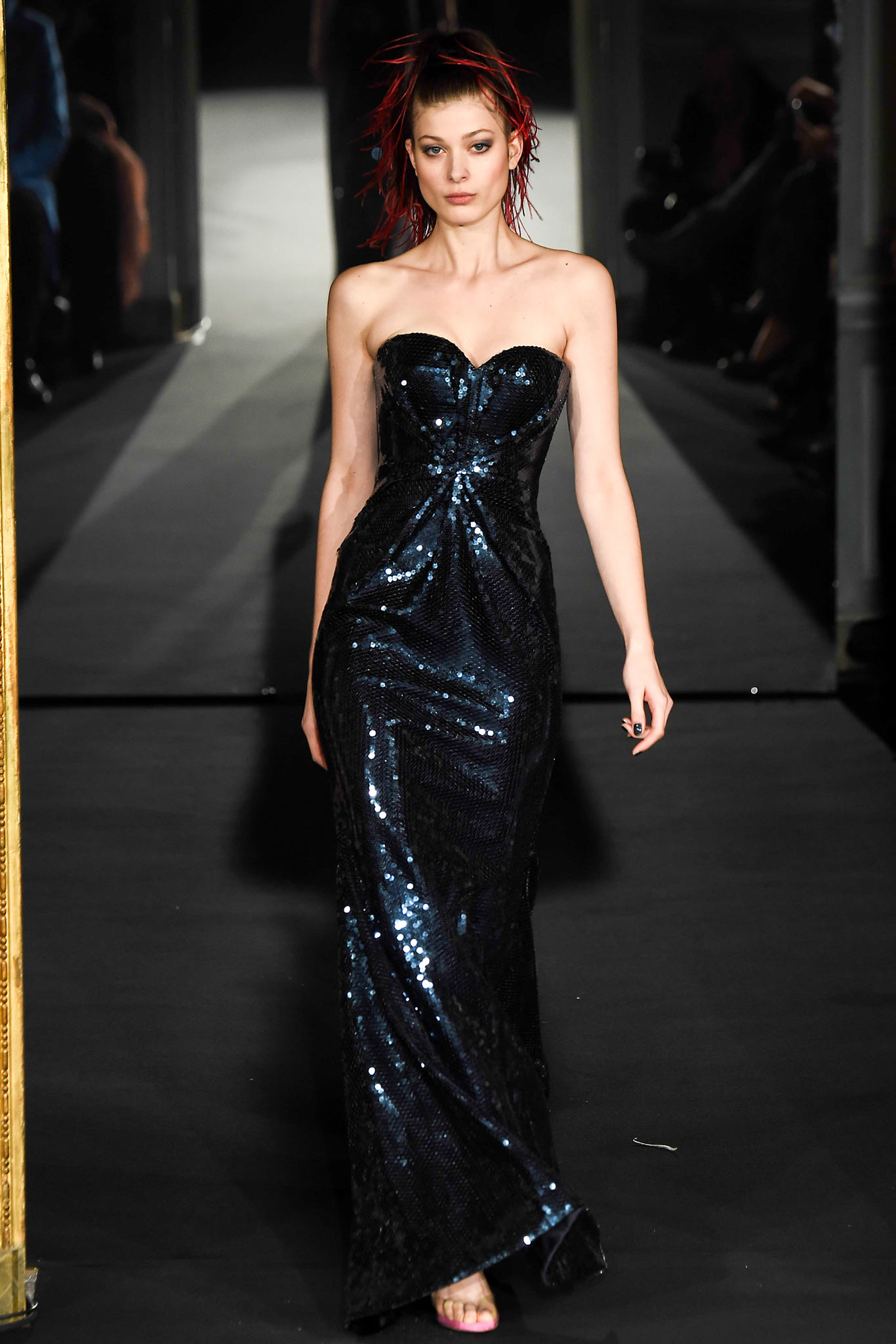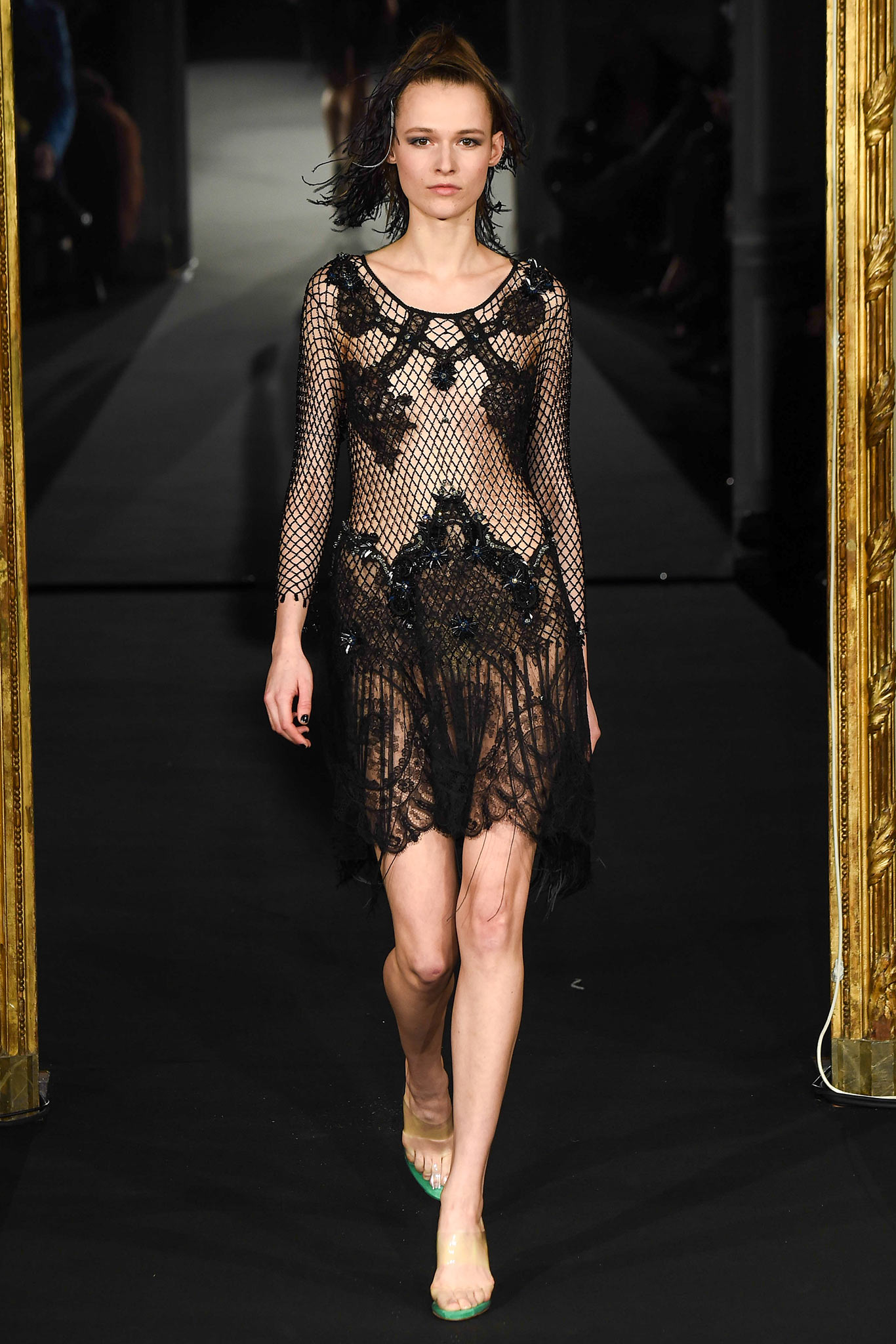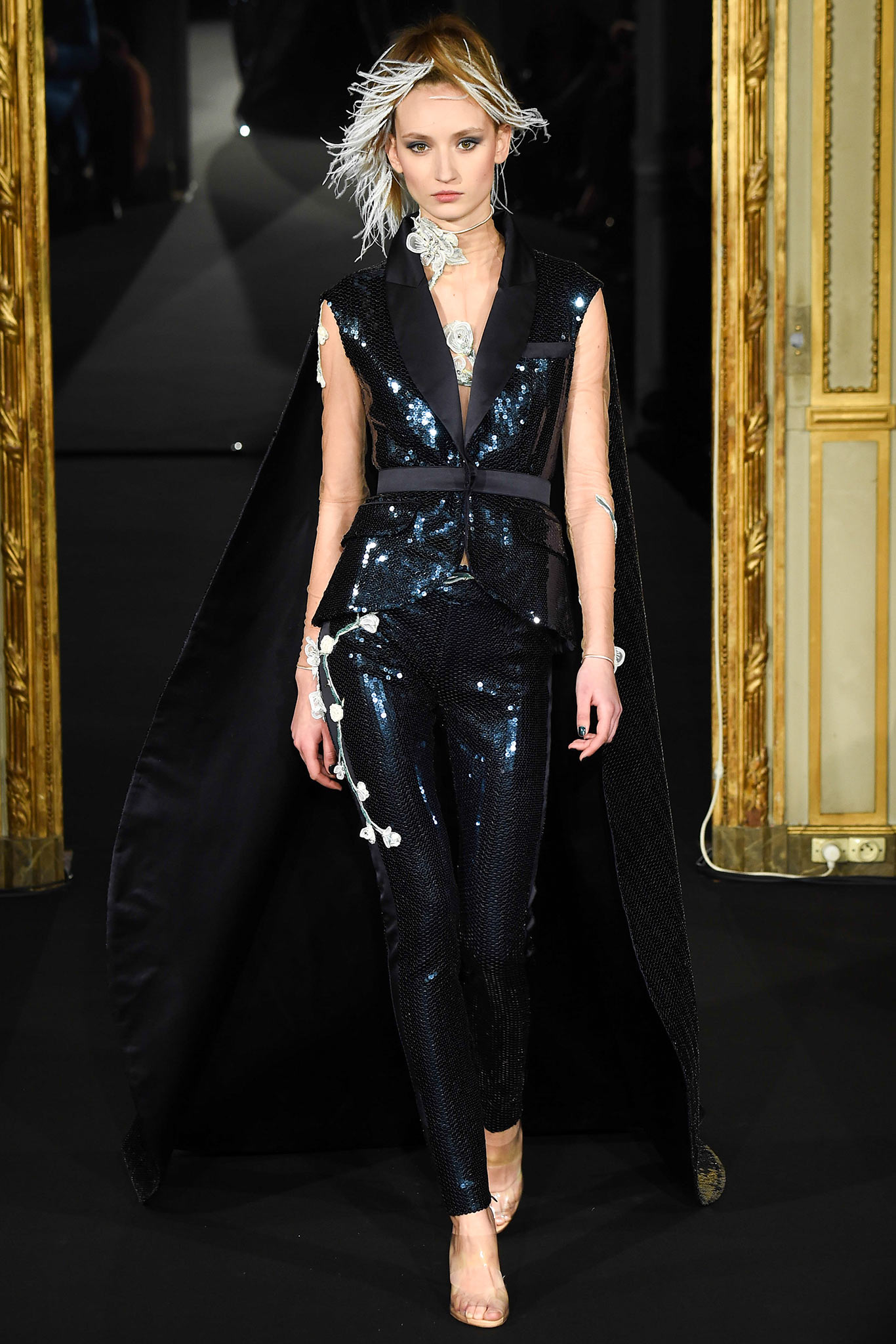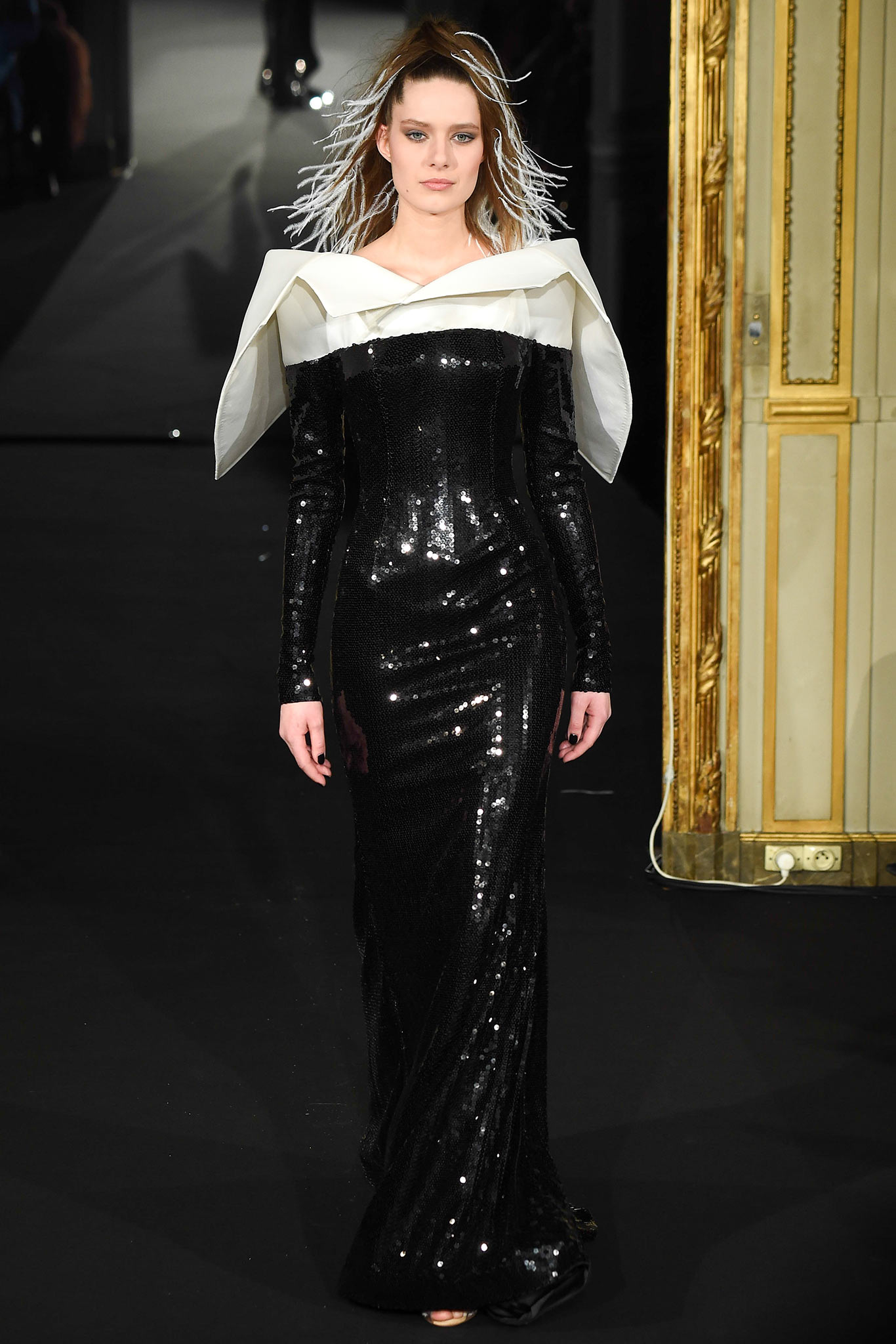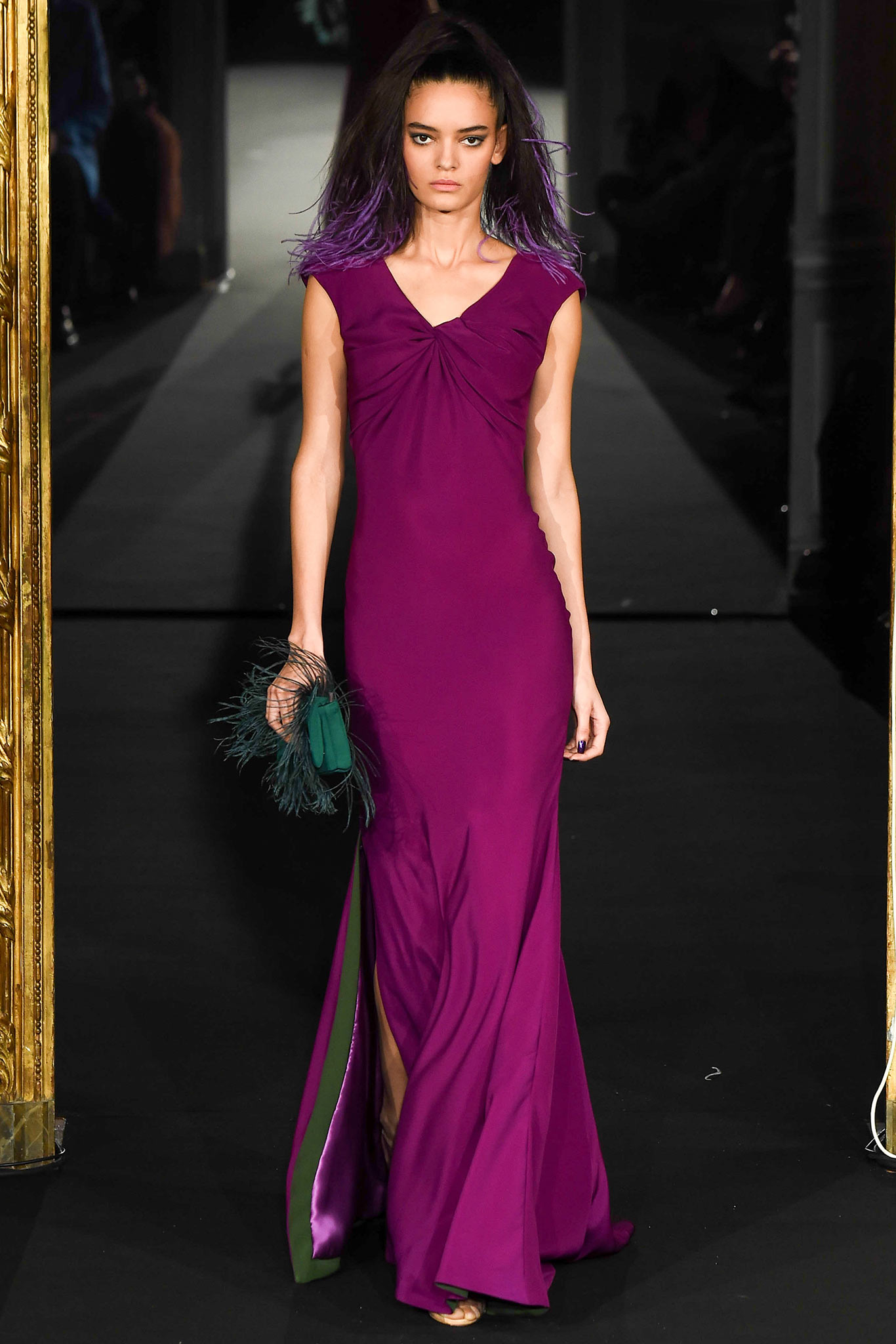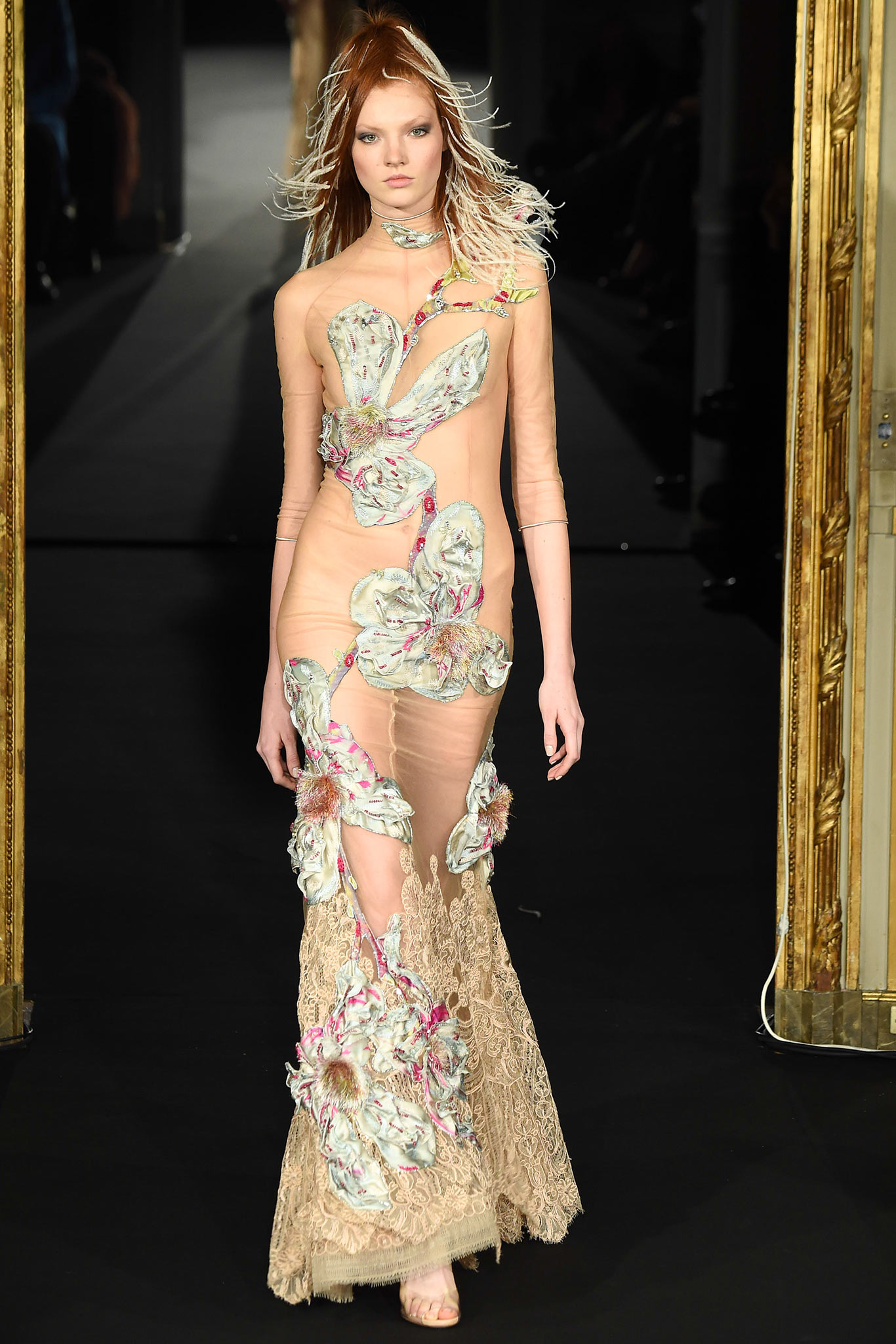
Among the works by French writer and Baudelaire contemporary Albert Samain is a poem from 1893 that begins, “There are strange evenings when flowers have a soul.” Strange evening aside—in Paris, anyway, this one felt rather normal—Alexis Mabille used that line to imagine female and floral forms as inextricably linked. By no means a novel proposition (this is Monsieur Dior’s territory, most of all), the collection could be distilled down to dramatic folds of fabric requiring deft tailoring typically applied to tailleur, as well as contoured draping in solid, saturated hues. Near the start of the show, a shimmery midnight blue gown, followed by a poppy-printed chiffon kimono, hinted at timeless dresses depicted in famous paintings from around Samain’s era—Sargent’s “Madame X” and Derain’s “Madame Matisse” come to mind. But this was not a period collection so much as one that further confirmed Mabille’s obsession with overworking his designs. Integrated capes and shawls amplified silhouettes that didn’t need amplifying. A bow, his maison signature, assumed such dimension in the final look that the model occupied just one side of it.
Samain was part of the Symbolist movement and, in literal terms, the humongous hand-embroidered pansy and peony appliqués qualified as striking decorative symbols (colorful hair feathers—whether meant to evoke fronds or stamens—qualified, too, but with less success). But even allowing that the collection did not aim to turn back time, it lacked the nuance those artists understood so well.

